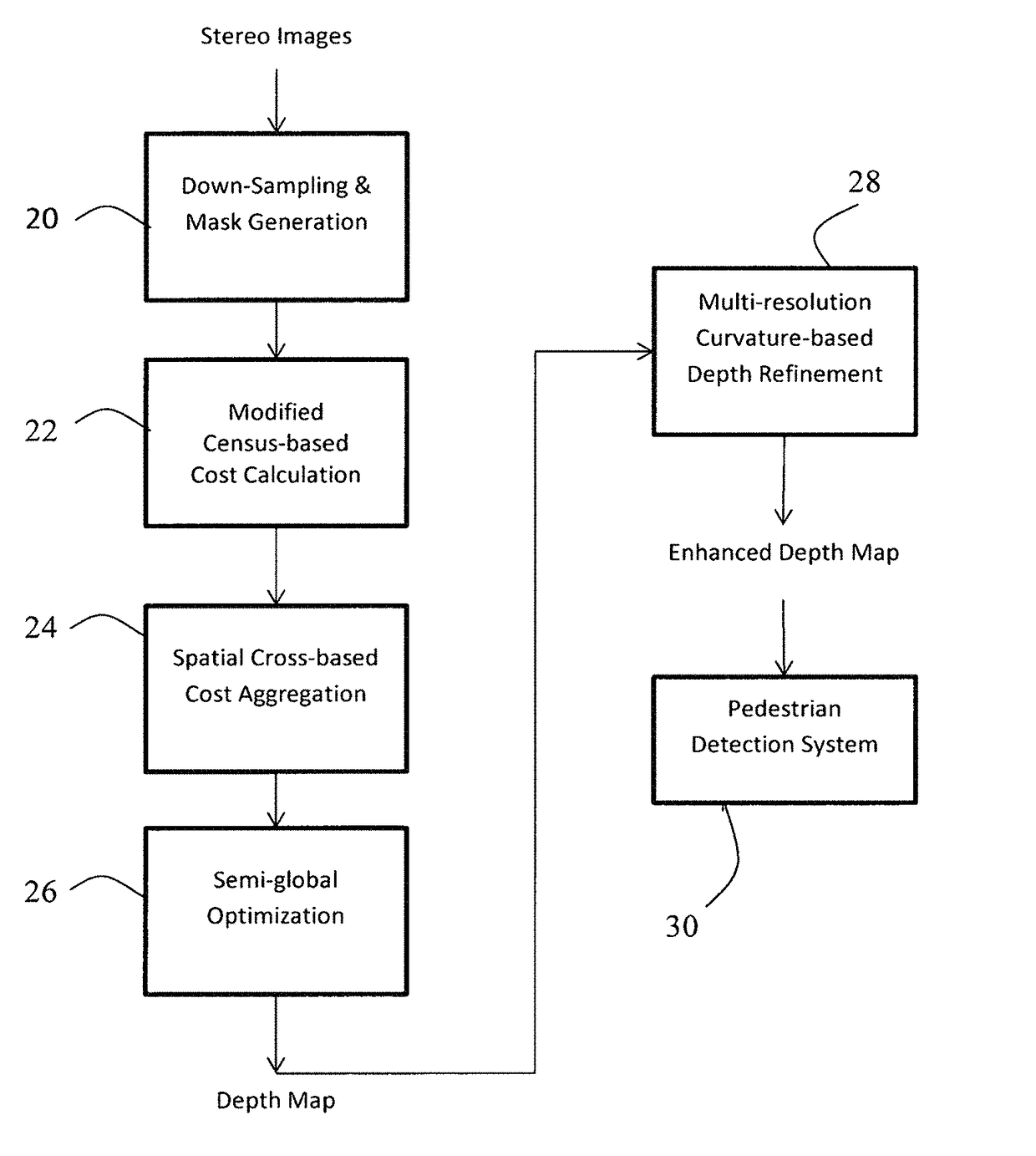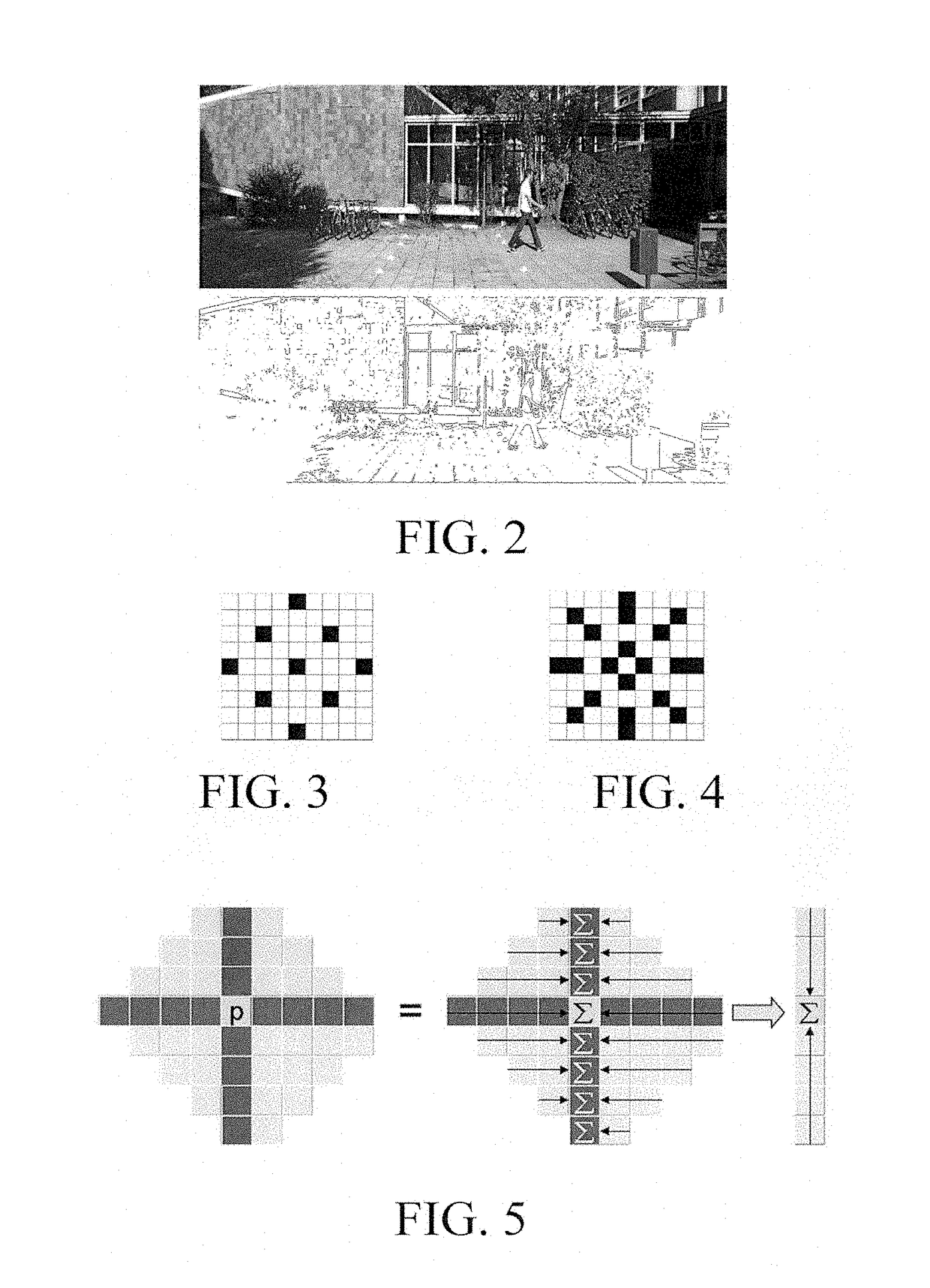Multi-resolution depth estimation using modified census transform for advanced driver assistance systems
a driver assistance system and census transform technology, applied in image analysis, image enhancement, instruments, etc., can solve the problems of noisy depth maps acquired by depth sensors, poor depth boundary generation, fast and computationally simple methods, etc., and achieve the effect of improving the quality of estimated depth maps
- Summary
- Abstract
- Description
- Claims
- Application Information
AI Technical Summary
Benefits of technology
Problems solved by technology
Method used
Image
Examples
examples
[0062]Simulations were performed to show the efficiency of the method compared with those of the state-of-the-art SGM-based stereo matching methods. The performance of the depth estimation and refinement algorithms of this invention were evaluated against the Middlebury data (D. Scharstein et al. “High-accuracy stereo depth maps using structured light,”Proc of IEEE Conf on Computer Vision and Pattern Recognition (CVPR), vol. 1, pp. 195-202, June 2003), and the KITTI stereovision benchmark suite (A. Geiger et al., “Are we ready for Autonomous Driving? The KITTI Vision Benchmark Suite,”Proc. of IEEE Conf on Computer Vision and Pattern Recognition (CVPR), pp. 3354-3361, June 2012). The workstation runs the Windows 7 operating system with Intel Xeon Quad-Core processor and 8 GB RAM. Four different image pairs from the Middlebury dataset are chosen for the evaluation. FIG. 5 shows results of depth estimation by the proposed technique.
[0063]Table I indicates the error statistic of percent...
PUM
 Login to View More
Login to View More Abstract
Description
Claims
Application Information
 Login to View More
Login to View More - R&D
- Intellectual Property
- Life Sciences
- Materials
- Tech Scout
- Unparalleled Data Quality
- Higher Quality Content
- 60% Fewer Hallucinations
Browse by: Latest US Patents, China's latest patents, Technical Efficacy Thesaurus, Application Domain, Technology Topic, Popular Technical Reports.
© 2025 PatSnap. All rights reserved.Legal|Privacy policy|Modern Slavery Act Transparency Statement|Sitemap|About US| Contact US: help@patsnap.com



